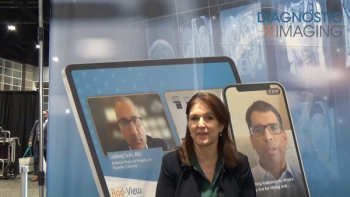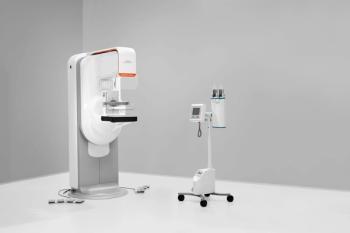
The DICOM Viewer Tower of Babel
An item for wish lists: user-friendly radiology software.
Every now and then, friends or family seek my input on medical matters. A fair number of these inquiries pertain to things I actually know something about…which, unsurprisingly, tends towards the radiological.
I, of course, am gratified that they consider me a source of wise counsel (or at least, the wisest they’ve got handy), and am especially grateful when circumstances allow me to contribute something I consider worthwhile.
That’s not just an affectation of humility. Rather, from the moment I know I’m being asked something, I’m immediately on the lookout for things that might prevent me from having anything useful to say. For instance, I’ve got about as much to offer in second-reading someone’s ankle MRI as I would in a discussion of quantum mechanics.
It’s not uncommon for me to get to a point where I’m about to helpfully review someone’s imaging, only to discover obstacles of a more technological nature that I now must explain to the individual(s) who have gone to the trouble to get their imaging into my hands. Because I pop the CD into my computer, and-surprise!-it proceeds to work less than wonderfully.
Sometimes, it’s a simple matter of the CD and my PC not playing nicely with one another. I have no idea why, but the software won’t launch…either at all, or it won’t get past its initial menu. This is sometimes remedied by my trying another computer (I am fortunate to have more than one), although such circumstances are baffling to me since my main machine, the one I always try first, is the most up-to-date of the bunch. On other occasions, it turns out that the imaging facility which made the CD is to blame, having left out some important file or another.
Even when I get the software running, the game is still afoot, because I must then figure out the DICOM viewer’s interface in order to manipulate and view the images. For reasons I have yet to suss out, much of the industry doesn’t seem to have placed a high priority on making this as intuitive-or even complete-as in actual PACS systems.
I should of course mention that not all of these DICOM viewers are so deficient. Some have everything I need, and even more (indeed, some have features I have wished were in the PACS systems used by my workplaces at the time). But let me offer my most recent example, in which I had a few hundred CT images to review:
Having looked over the default images, I proceeded to reach for the control to use other window/level presets…and found none. All the programmers had provided was a single click-n-drag tool to change the W/L on the image at hand…and, when the user scrolled to the next image, its W/L were still at the default. So, either 1) the software manufacturer expected the user to manually adjust each image, 2) there was a more robust set of controls hidden in the programming (without a Help menu to direct the user to it), or 3) the ability to window and level was deemed irrelevant when making the viewer software.[[{"type":"media","view_mode":"media_crop","fid":"43097","attributes":{"alt":"radiology software","class":"media-image media-image-right","id":"media_crop_1999216329923","media_crop_h":"0","media_crop_image_style":"-1","media_crop_instance":"4691","media_crop_rotate":"0","media_crop_scale_h":"0","media_crop_scale_w":"0","media_crop_w":"0","media_crop_x":"0","media_crop_y":"0","style":"height: 166px; width: 170px; border-width: 0px; border-style: solid; margin: 1px; float: right;","title":"©James Steidl/Shutterstock.com","typeof":"foaf:Image"}}]]
Ultimately, I spent more time sleuthing this matter in the software and on the manufacturer’s webpage than I would ever have studying the images themselves…and wound up leaving a message for their support team which may or may not ever get answered. Then, I spent the majority of a phone call with the friend who’d gotten imaged explaining what windows and levels were so she would understand why I had only reviewed part of her study thus far.
It doesn’t seem that this should be such a wheel-reinvention for every vendor out there. Yes, there are some bells and whistles that GE might include in its viewing software that, say, Joe’s Radiology Emporium might not. The basic tools that pretty much anybody viewing medical imaging uses should, I imagine, be front and center in any interface put forth for customers to buy. Notwithstanding the disclaimer on each and every CD that the software is “not for diagnostic use.”
And, if a vendor does hear from clients that users are having issues with their product (maybe an excessive assumption from me that they are even listening for feedback), the vendor would do well to engage in some damage control by putting a user-manual on their website until they can roll out an improved product the next time out.
Newsletter
Stay at the forefront of radiology with the Diagnostic Imaging newsletter, delivering the latest news, clinical insights, and imaging advancements for today’s radiologists.




























